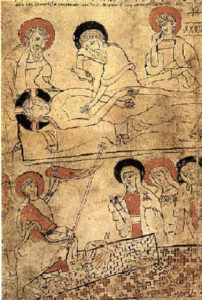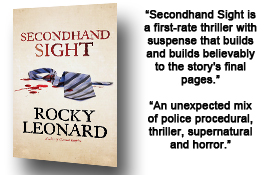Many people concluded that the Shroud of Turin must be a clever forgery once the carbon 14 dating test results of 1988 were announced. Those results apparently established a date of origin for the material ranging between 1260 and 1390 A. D. The three laboratories selected to perform the tests had impeccable reputations. They worked independently, yet achieved remarkably similar results -- all three labs declared the shroud had a medieval origin, more than a thousand years after the death of the Christ. Assuming their work was stellar and the results were accurate, the Shroud could not possibly have been used to cover the body of Jesus after the crucifixion. So why has it been preserved and continues to be venerated, if the shroud is nothing but a fake? And why have people continued to study a forged relic? These and several other questions came to mind while watching the History Channel special (link to full program here) titled "The Real Face of Jesus": Is it possible to still believe the shroud could be real, given the results of carbon dating experiments performed in 1988? Should the veracity of the scientists and the results of the tests be trusted? If the Shroud really wrapped the body of a dead human being, was that man the crucified Christ? If the Shroud is genuine, can it be used to somehow determine what Jesus looked like? The first three questions enumerated above will be answered in this article, and the fourth question will be addressed in the fourth and final installment of this series. In my personal opinion, the integrity nor … [Read more...]
The real face of Jesus, part 1
Not that long ago the History Channel featured a phenomenal two hour special titled "The Real Face of Jesus". The program provided new and extensive details about a scientific study of the Shroud of Turin, plus information about alleged corroborating evidence, and an attempt to reconstruct the facial image from the shroud by an expert at producing accurate and lifelike death masks. Of course, skeptics have argued that experiments have proved that the image on the shroud can be produced by artificial means, but scientific evidence rebuts their claims -- these experiments might create an image that superficially resembles the image on the shroud, but not with all of the unique characteristics of it. Carbon-14 dating allegedly dated the material of the shroud as being between than 1260-1390 A. D., but scientists from the STURP team have subsequently invalidated their own findings. Over the years, the Shroud has been handled, lost, burned, hidden, and taken as plunder in the course of its known history. The chain of ownership is consistent after the date provided via Carbon-14 dating, but a history of an alleged burial shroud for Christ existed from the first century A.D., with a miraculous healing of King Agar V. Some people question whether or not Jesus actually existed, but as the Catholic priest Father Jonathan Morris has said about Jesus, "We don't believe in an idea. We believe in a man." If Jesus the human existed, as the Bible and history indicates, and if the story of his crucifixion are accurate, the man suffered horrific injuries and inconceivable … [Read more...]
Carbon dating and the Shroud of Turin
If queried for their opinion about the authenticity of the Shroud of Turin, probably 9 out of every 10 people would essentially say the same thing -- carbon testing performed in 1988 clearly proved that the religious artifact was nothing more than a brilliantly conceived fraud. I can't say that I find fault with the Shroud's critics, because I've seen the same evidence. After all, test results obtained by careful application of the scientific method are really tough to dispute. And the 1988 tests seemed to prove beyond any reasonable doubt that the Shroud was a forgery. Even as stubborn as I can be when it comes to accepting "facts" when other people have told them to me, I must concede that when multiple independent tests have reached the same conclusion, it is almost always because they invariably have gotten the correct answers. It should be noted that the key word in the sentence above is "almost." As part of the Shroud of Turin Research Project (STURP) three different laboratories in Zurich, Oxford, and Tucson performed independent carbon dating tests. They all concluded the alleged fake shroud was supposedly manufactured sometime between 1290 and 1360 AD, ostensibly for no other reason than to fool a lot of people and legitimize belief in the crucifixion and resurrection of Jesus. Interestingly, the STURP experiments produced a puzzling mix of results. Tests and analysis eliminated any possibility the image on the fabric had been painted. One test indicated that a copious amount of human blood had saturated the fabric after oozing from the gruesome … [Read more...]



